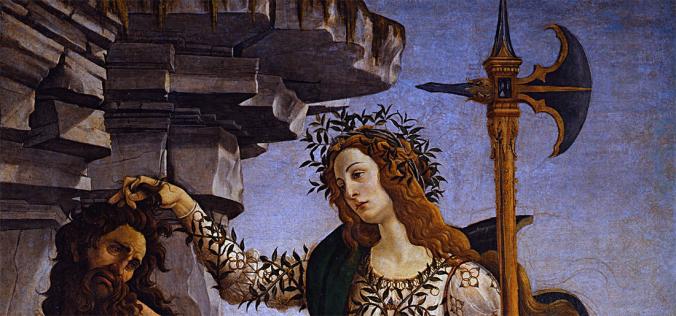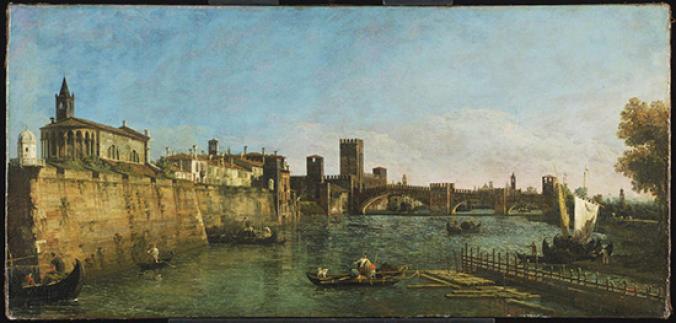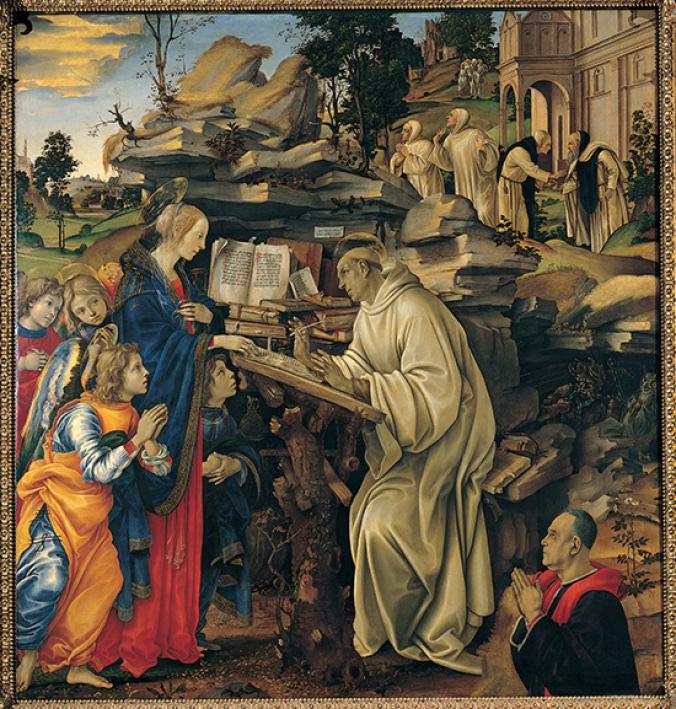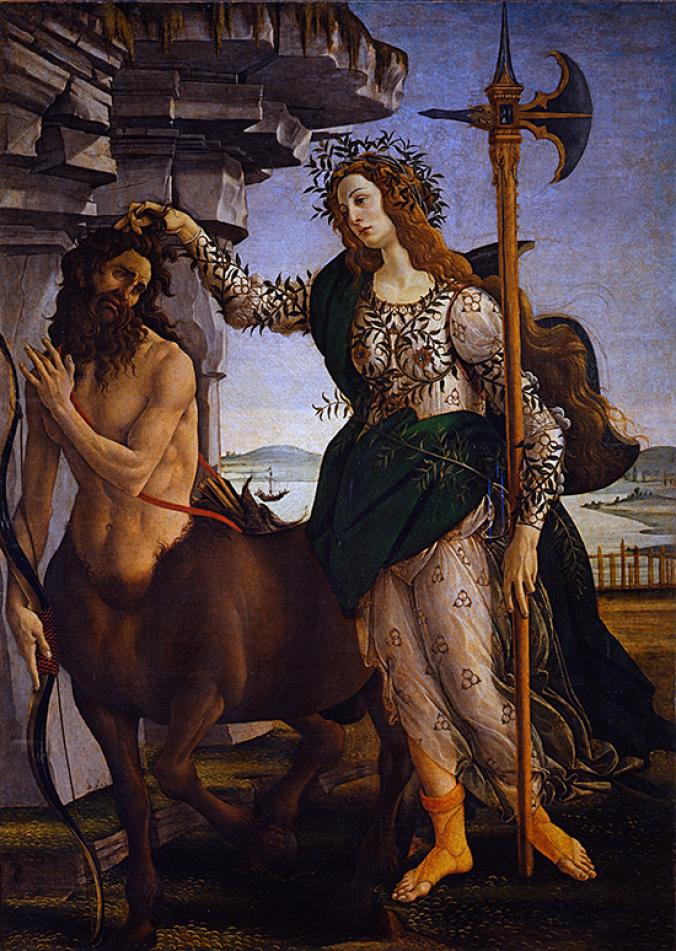
In 1517, the Republic of Venice rebuilt the fortifications protecting the city of Verona. During the construction, strange rocks came to light, looking eerily like seashells and crabs. People had long puzzled over fossils, but for some reason this new discovery left the people of Verona especially intrigued. Perhaps it was the fact that crabs and seashells live in the ocean, which was sixty miles from the city.

Some Veronese citizens decided to bring the rocks to the most learned scholar in the city at the time: a physician named Girolamo Fracastoro. Fracastoro looked at the fossils and came to a surprising conclusion. He immediately ruled out the possibility that Noah’s Flood could have delivered the sea creatures to Verona. Instead, Fracastoro declared that fossils had come to the city through a series of gradual changes to an immensely old Earth.
Fracastoro explained that over vast cycles, the ocean slowly moved inland and then slowly crept back out. It would flood one country as it retreated from another. Over time, great volumes of sand and debris accumulated on the sea floor, and when the ocean ebbed it left behind hills and mountains–complete with the fossils of sea creatures.
Five centuries later, it can be hard to believe that anyone in Fracostoro’s time could have such an appreciation for the great age of the Earth. It’s only in the modern age of science that we know that the Earth is indeed enormously old–over 4.6 billion years old, in fact–and that its surface has been gradually worked over that vast stretch of time. Before the rise of modern science, we assume, Europeans relied on a strict reading of the Bible to explain the history of the Earth and believed that the planet was just a few thousand years old. Today, young Earth creationists seem like vestiges left behind from that pre-modern age.
And yet there’s no doubt that Fracostoro appreciated Deep Time. He may not have understood radiometric dating, but he certainly didn’t think the world was a few thousand years old.
To fit Fracostoro into conventional narratives, historians have tried to cast him as a fluke. They acknowledge that a few early scholars believed in an ancient Earth. But they were ignored because they were too far ahead of their time. It wasn’t until the 1700s that science had matured enough for an ancient age of the Earth to be widely accepted.
That story may feel satisfying, but it doesn’t fit the facts. In a June issue of the journal IsisJune issue of the journal Isis the Yale historian Ivano Dal Prete argues Fracostoro was very much of his time.
When Fracostoro described the gradual changes to the Earth, he didn’t claim that he was saying anything new or controversial. Instead, he relied on centuries of previous writers. In the Middle Ages, European scholars had rediscovered Aristotle, who had written that the same part of the Earth that are now dry were once wet, and vice versa. In the 1200s and 1300s, philosophers built on Aristotle’s work with more complicated explanations for the Earth’s history. “The earth has always existed as Aristotle appears to have thought,” wrote Jean Buridan in the early 1300s, “even though this may not be true according to our faith.” In the late 1400s, another writer noted that the view of Earth as undergoing gradual changes over vast stretches of time was the “most common among philosophers.”
By the early 1500s, Dal Prete writes, it wasn’t just philosophers who shared this view. So did the reading public. Earth sciences became so popular that publishers cranked out a torrent of books on the topic. Rather than scholarly Latin, these books appeared in Italian and other vernacular language. In those books, the public could be exposed to the idea of an ancient Earth.
Even cardinals jumped on the band wagon. Gasparo Contarini, a cardinal from Venice in the early 1500s, published an entire book about geology. And he did so without ever once mentioning Noah’s Flood. Instead, Contarini wrote that physical forces sculpted the planet over vast stretches of time.

You don’t have to page through old books to see just how geologically minded people in the Renaissance had become. Their paintings show us where their eyes turned when they looked at landscapes. And remarkably often, they turned to rocks. A number of the finest painters of the Renaissance incorporated exposed layers of rocks in their pictures–the fruits of careful observation. They were looking at the intricate effects of millions of years of geological change.
It’s always a mistake to impose a simple science-versus-religion structure onto the history of thought, and Dal Prete shows that geology is no exception. In 1519, for example, a writer named Tiberio Russilano got in trouble for a book called Apology against the Hooded, in which he dismissed the Biblical history of the Earth and argued that the planet was immensely old. The Inquisition burned the book, and Russilano barely escaped arrest.
It would be easy to jump to the conclusion that he got in trouble for his science. But the history is more complicated than that. The book was actually grab bag of all sorts of strange passages–both scientific and theological. And it was the theological material, such as Russilano’s denial that Christ was divine, that really riled up the inquisitors.
That’s not to say that religion didn’t have an effect on the history of science. By the late 1500s, Protestantism was on the rise across Europe, and the Catholic Church responded with the Counter-Reformation. Part of that effort included putting pressure on publishers. They demanded that the Bible be read as literal history unless there was irrefutable proof for a different reading. “The world is not eternal,” declared the Jesuit priest Benito Pereira in the 1570s. “From its beginning to those days no more than five thousand six hundred years have elapsed.”
It turns out, however, that many philosophers didn’t follow Pereira example very closely. They accepted that the Earth had not existed forever, but they saw it as lasting far longer than a few thousand years. Some treated Noah’s Flood as a real geological event, but merely as the most recent of many great cataclysms. And for all the vigor of the Counter-Reformation, no one was burned at the stake for such claims.
Writers in Italy and elsewhere continued to develop ideas about the history of Earth. They investigated fossils more deeply, they thought long and hard about how layers of rock formed, and they considered how volcanoes and earthquakes shaped the planet. By the 1700s, the outlines of modern geology were emerging. But the proto-geologists of the 1700s didn’t see their work as a fundamental break from the past. Instead, they saw a seamless connection reaching back centuries.
